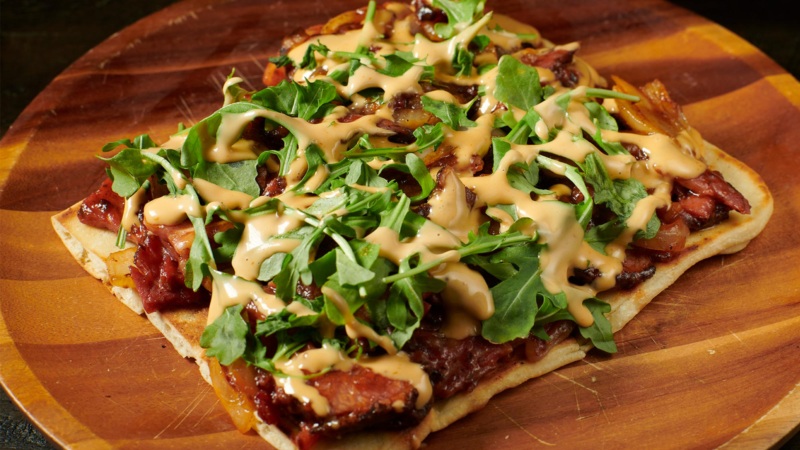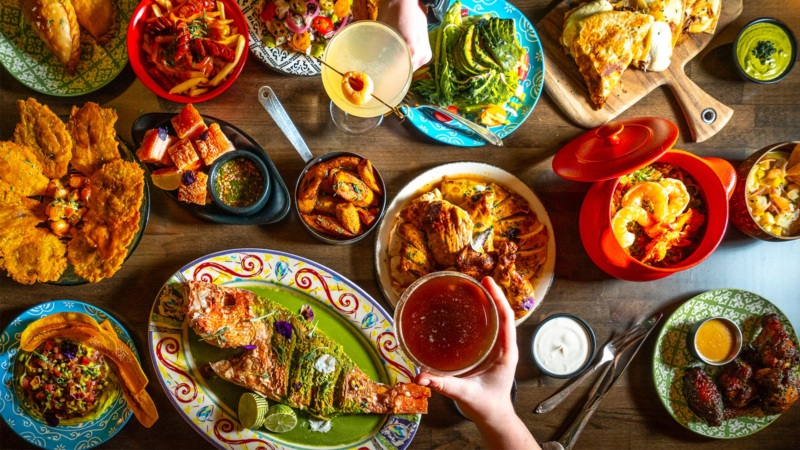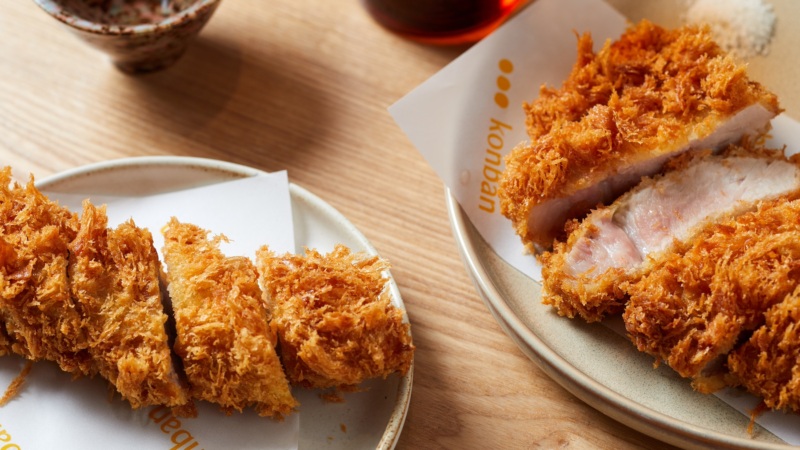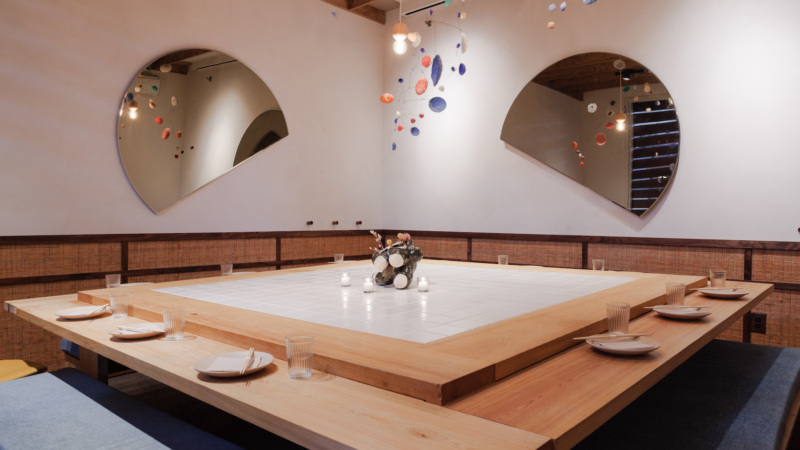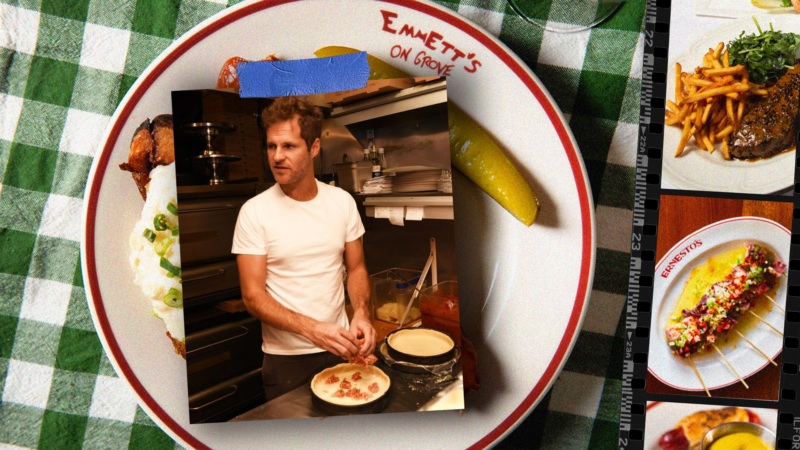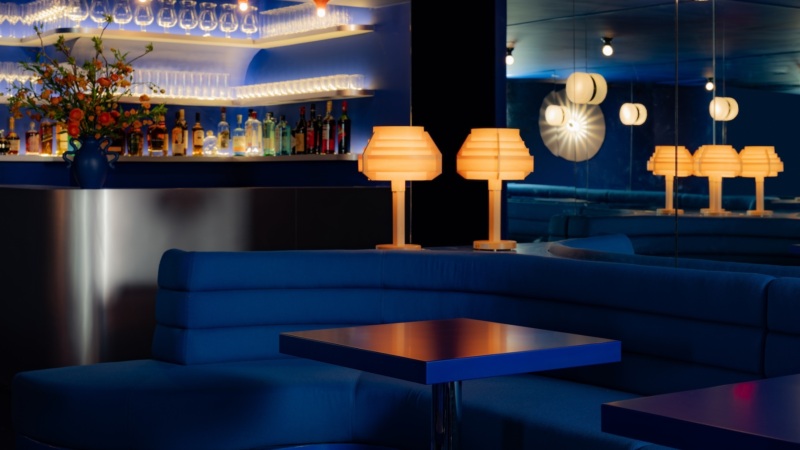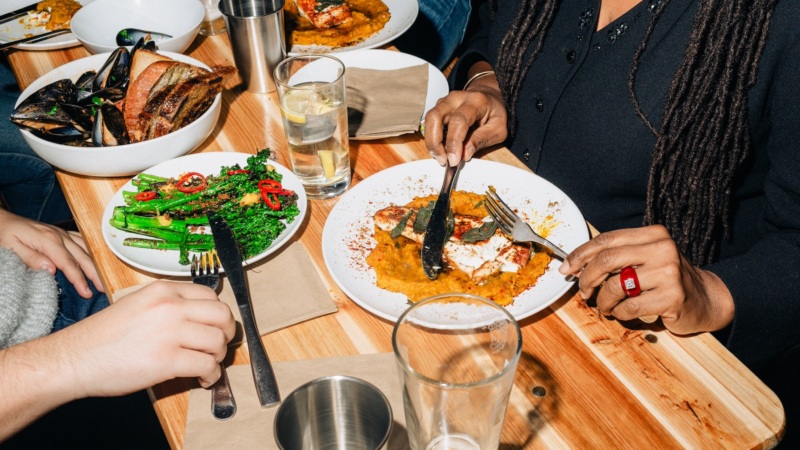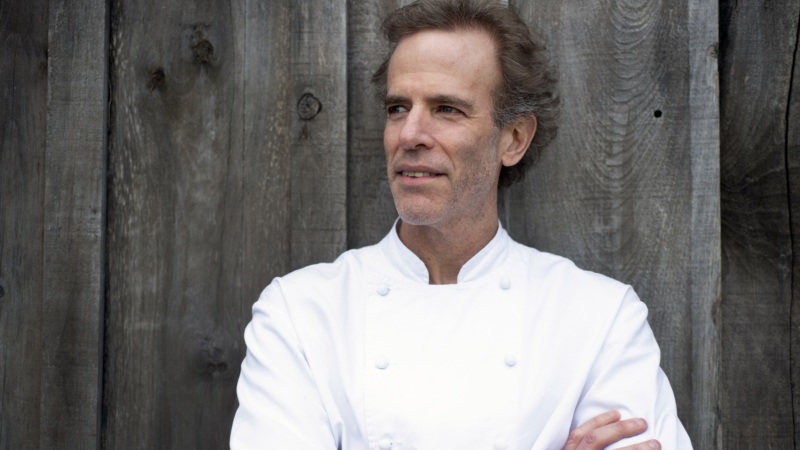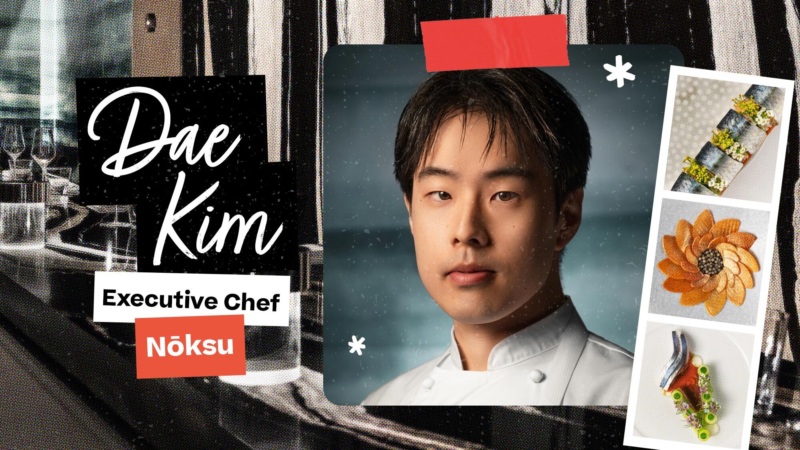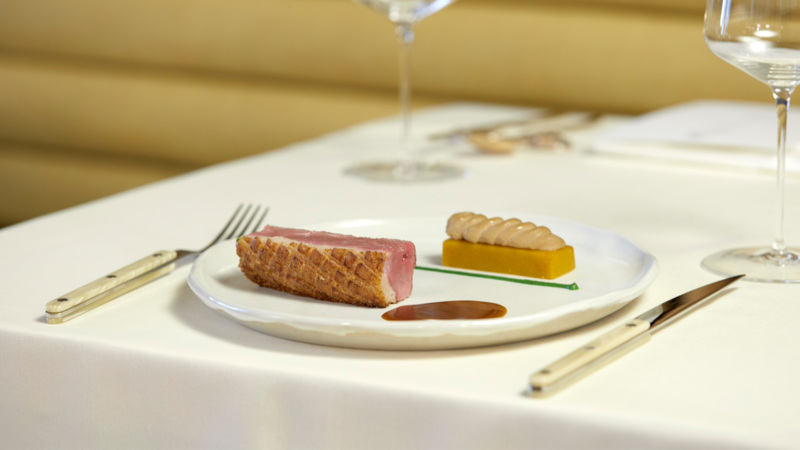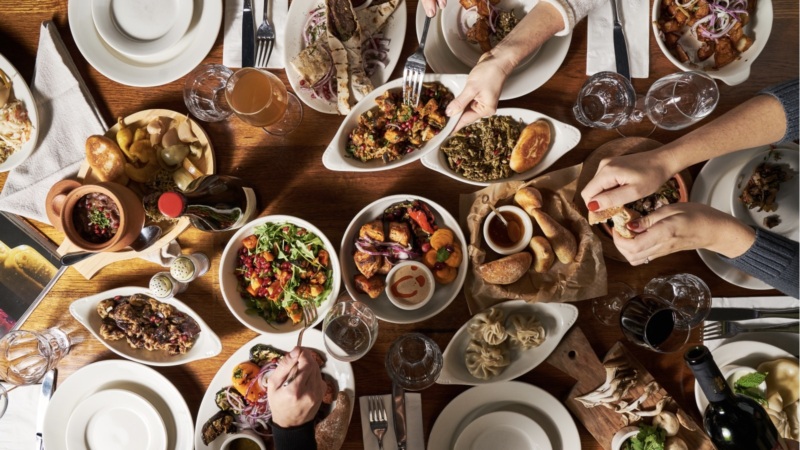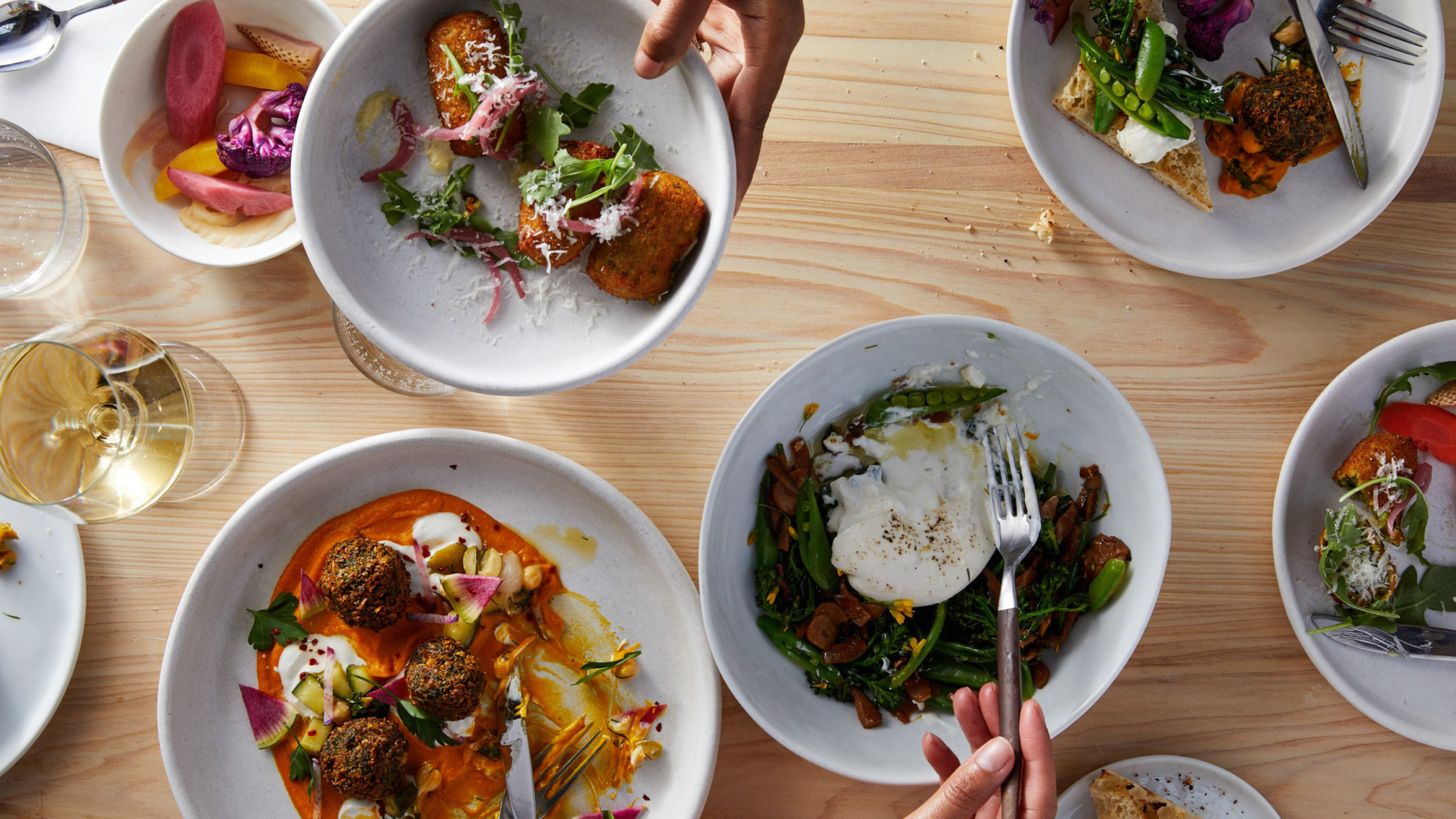
Winona’s Opened Mid-Pandemic. Being Flexible Became Its Identity.
You could argue that Winona’s is not a traditional restaurant, but then again, what does it mean to be a restaurant these days? Over the last year, we’ve seen sit-down spots transform into curated grocery stores and bottle shops, collabs in every corner, takeout galore, and outdoor setups in every shape and size.
Put another way, PPE has been a major theme in the hospitality industry. Not just personal protective equipment, but also the ways that operators and chefs have been forced to do business: through Pivots, Pop-ups, and a little bit of Everything, whether you already had a healthy business before the pandemic — or had the fortune (or misfortune) to open your doors in the midst of it all.
Winona’s, stylishly laid-back and attuned to its North Bed-Stuy neighborhood, managed to turn itself into a paragon of the latter.
- The June Hit List: Dame, Fulgurances, Jolene, Mockingbird, and More
- ‘As Long as Sylvia’s is Open, the Marquee Will be Lit.’ How the Harlem Legend Has Endured
- The Wine Hit List, Early Summer Edition: Vinegar Hill House, Clay, Bar Bête, and More
- At Jolene, Gabriel Stulman Can’t Wait to Build the New York of Tomorrow
- New on Resy: The Reopening Season Mega-Edition
The restaurant — and café, and wine bar — debuted last November, at a time when restaurants were allowed to operate indoors at only 25 percent capacity, and a 10 p.m. curfew was in effect.
“I think we had three or four tables when we first opened,” remembers Cressida Greening, Winona’s chef, who owns the restaurant with her husband, Emir Dupeyron.
Still, the couple had been holding onto the keys since May 2019, and had survived the travails of construction in a New York storefront. Which meant it was time to start serving ingredient-driven shared plates and pouring low-intervention wines, COVID or no. There would be scotch eggs and chicken liver pâté, burrata with grilled vegetables and confit mushrooms, roasted bone marrow with horseradish cream and herb salad, and olive oil cake topped with whatever fruit was in season, all the things that resonate in north Brooklyn. Although many restaurants were building winterized patios, Greening and Dupeyron didn’t have plans to purchase heat lamps and serve diners al fresco — yet.
And then, weeks later, the city put the kibosh on indoor dining, which meant Winona’s had to close and downshift, quickly. The couple bought a refrigerator and transformed the front part of their space into a wine store. Breakfast and lunch menus were no longer, but they stayed open in the mornings to serve coffee, croissants, and migas tacos from King David Tacos. “We couldn’t afford to have people in the kitchen,” Greening says, “when we weren’t doing the kind of turnover in the daytime that we needed to pay our staff a good wage.”

Eventually, Greening started making her own croissants instead of buying them from Balthazar Bakery, and they began bottling cocktails, using citric acid in place of fresh citrus to ensure shelf stability. “It opened our eyes to see what worked for us and how we could survive,” Dupeyron says. It was, he continues, like “having a soft opening for six months.”
Winona’s is located on a busy stretch of Flushing Avenue, on the border of Bed-Stuy and the Hasidic part of Williamsburg. It’s a noisy area during the day, and even at night, which is why Greening was initially hesitant to implement outdoor dining. At the same time, she found it difficult to deal with the fact that most diners would have to be introduced to Winona’s through takeout or delivery. “If someone’s going to see Winona’s on Seamless, they’re not going to get it,” she says. “The whole ethos of our space is a space, is hospitality, is a whole experience. How am I supposed to put all of that into a to-go box, into a meatball? It’s impossible.”
“It’s like saying hi to someone on Tinder,” Dupeyron adds.
In other words, they were determined to get diners to fall for Winona’s the old-fashioned way. Which, not unlike trying to end-run Tinder, required some effort: The couple doubled down on creating a COVID-friendly dining space. In January, they built a covered structure with frosted windows to obscure the neighborhood hubbub, to which they added an electric fireplace, a soft orange rug, and light wood tables and chairs.
Slowly but surely, people began to show up.
▪️
Winona’s, in its current iteration, is not exactly the place that Greening and Dupeyron originally imagined. Instead, it reflects the combo that’s required today to run a restaurant in New York, in the first easing of post-pandemic life. So while their story is their own, it’s also a common one.
Among other things, this was supposed to be a chance for both of them to run the restaurant they’d dreamed of. Dupeyron had plenty of restaurant experience, having formerly owned Cafe Condesa in the West Village and managed several spots, including La Milagrosa Mezcaleria, while Greening went to culinary school, and then did a stint at the Breslin, before building a catering business and a supper club, which she hosted in their apartment of almost six years — directly next door to what’s now Winona’s.
When she became tired of the modern New York chef hustle — working out of shared commissary kitchens, and having to transport food from one end of the city to another for events — the couple decided to invest in their own space.
That’s usually an insurmountable wall for most restaurateurs in the city, at least those without deep-pocketed investors. But they had the brilliant idea to ask their landlord: Would he be open to letting them run a restaurant out of what was then a refrigeration store?
The store had been in the landlord’s family for three generations, but it wasn’t doing much (if any) business anymore, and he readily agreed. “He shed a little tear when we signed the contract, because he was born in this building,” Greening recalls. “But he’s very happy that people are coming.”
To say this kind of landlord-tenant relationship is rare in New York City would be a dramatic understatement — as is the fact that they received rent abatement for an entire year on account of the pandemic.
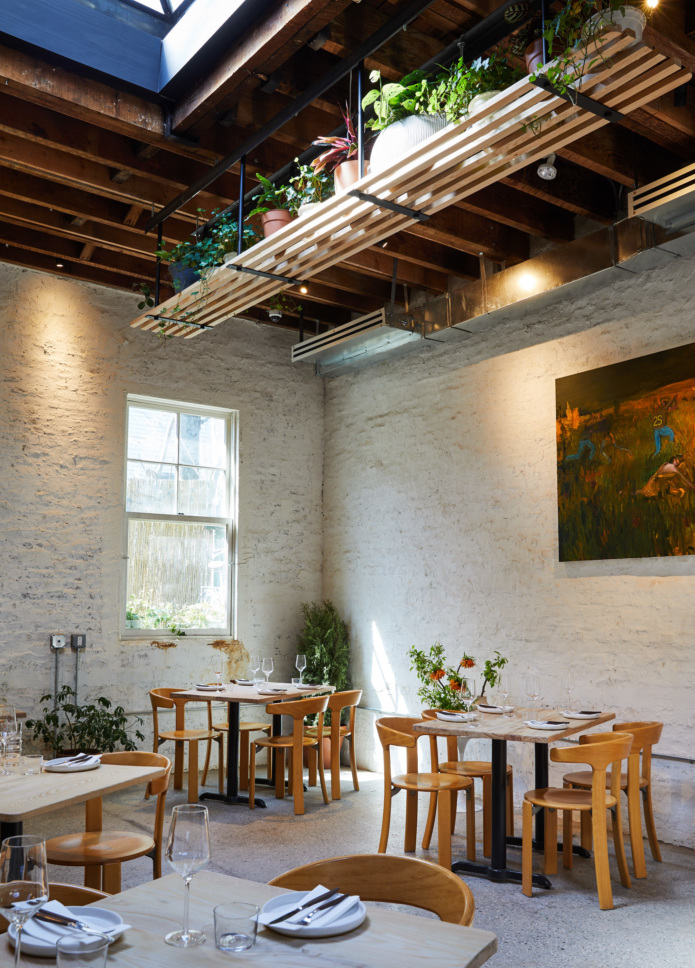
But they quickly turned the space into something they could work with. While the storefront looks unassuming from the sidewalk, at 2,500 square feet, Winona’s is large — and when you take a left past the café and down the hallway, the space opens up to a lofty, stylishly decorated dining room, marked by exposed wood beams and several skylights. The couple’s apartment is similarly designed, which had made it a perfect place to host Greening’s supper clubs.
Her family-style preparations were bountiful but not precious. Duperyron, who is from Mexico City, likens the hospitality of the events to the cantinas of his hometown, where “they always give you an extra shot of this or that, all the salsas, and all the limes.” This generosity in both food and spirit is the ethos that they are aiming to recreate at Winona’s. Perhaps most importantly, the couple has a young daughter, and they want Winona’s to feel like the family-run place it is.
▪️
This, however, is where that personal touch meets post-COVID restaurant reality. The space, and that all-in-the-family outlook, made Winona’s a natural fit to host pop-up residencies. As Greening and Duperyron were reconfiguring their plans, they thought it would be smart to let industry friends utilize the restaurant on the nights they weren’t open. First up was Elisa Da Prato, a chef who was in town for the winter while her namesake restaurant in Tuscany was closed. She served aperitivo-style snack boards during a series of Sunday lunches. Later on, the queer culinary collaborative ediciones did a several-week residency on Sundays and Mondays, featuring Latin dishes from chefs Tony Ortiz and Zacarías González, and wine pairings from Raquel Makler of the wine cooperative AMIGXS, who also works as a sommelier at Winona’s.
Hence Duperyron likes to joke that he and Greening aren’t just restaurateurs anymore; they’re talent bookers as well. There’s more than a little truth to that. And more than a little value. For one thing, these off-night events allow them to expand their circle of customers and collaborators. For another, they’re keeping the revenue from booze sales during pop-ups, which historically generates the highest profit margins for restaurants. “If we wanted to survive, we had to expand who we are and provide more opportunities for people to come, even if it’s for someone else’s food,” Duperyron says.
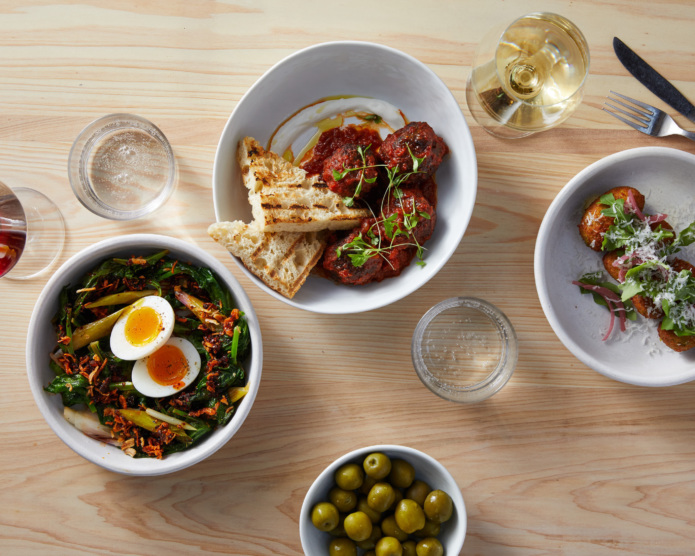
And now, with the city starting to open back up, it’s time for more evolution. That might mean opening as Winona’s on Sundays, instead of lending the kitchen to a visiting chef. As Greening notes, “If you can be busy on Sunday, you’ve won over the neighborhood.”
But that’s not to say the pop-ups will go away. After all, there are still Mondays, and catering to the community is not only about the customers — it’s also about peers within the industry, who need support and money, and in some cases, a place to be able to cook. “If I have a cheaper rent then I get a break, and it’s about transmitting,” Duperyron says, “If we are in the position of being able to be generous, it’s a mistake not to.”
Emily Wilson is a New York-based food writer. Follow her on Twitter and Instagram. Follow Resy, too.

